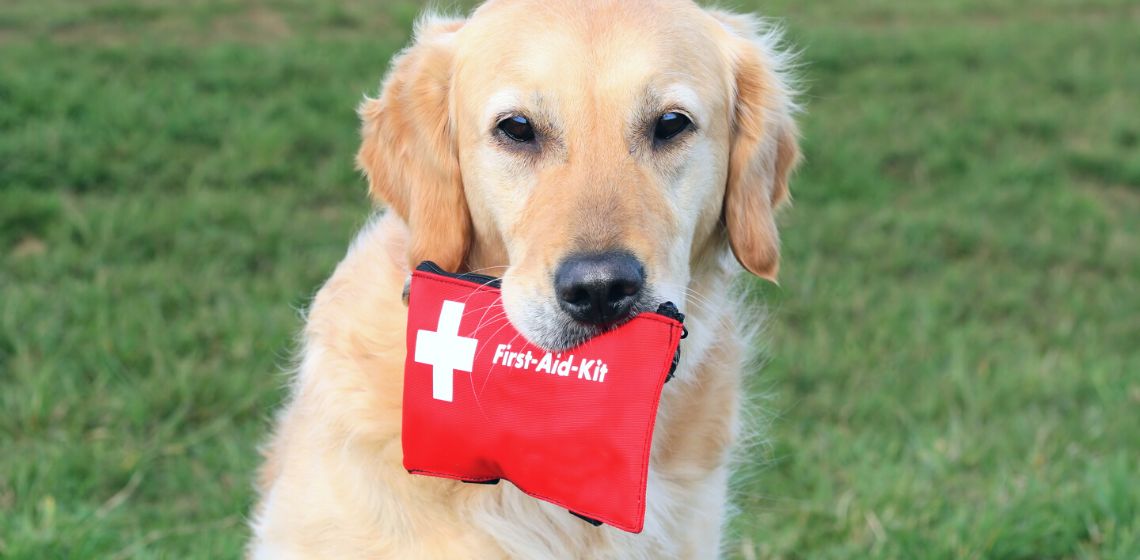Table of Contents
As a pet parent, one of your top priorities is ensuring the health and safety of your beloved furry companion. Pet first aid is a crucial aspect of responsible pet ownership and can make a difference when emergencies arise. In this article, we will discuss the essential items for a pet first aid kit, basic first aid techniques for common pet emergencies, and tips for preventing pet emergencies. Remember that any first aid administered to your pet should be followed by immediate veterinary care.
Building a First Aid Kit
Having a pet first aid kit handy can be beneficial in certain situations. However, first aid is not a substitute for veterinary care. If you wish to have a first aid kit at home, consider the following items:
- Gauze: For dressing wounds and applying pressure to stop bleeding
- Bandages: Self-adhesive or cohesive bandages that won’t stick to fur
- Tweezers: For removing splinters, ticks, or foreign objects
- Scissors: For cutting bandages or trimming fur around wounds
- Disposable gloves: To protect your hands while administering first aid
- Digital thermometer: To monitor your pet’s temperature rectally
- Antiseptic solution: For cleaning wounds
- Antibacterial ointment: To apply to minor cuts and abrasions
- Blood clotting powder: To stop minor bleeding, for example, from a torn toenail
- Hydrogen peroxide: To induce vomiting under a veterinarian’s guidance in dogs (never in cats)
- Sterile saline solution: For flushing wounds or eyes
- Emergency contact information: Your vet’s phone number, contact information for your local emergency vet clinic, and the pet poison hotline
- A blanket of towel: For warmth, comfort, and to help carry your pet if needed
- A muzzle: To protect yourself and others from bites during a stressful situation
Common Pet Emergencies
Choking
Possible signs of choking include gagging, pawing at the mouth, coughing, difficulty breathing, and blue-tinged lips or tongue. When attempting to help a choking pet, it is important to use caution, as many animals can bite out of panic.
- If your pet can still breathe, keep them calm and head to the emergency vet.
- Look into your pet’s mouth to see if a foreign object is visible. If you can carefully and safely do so, remove it with tweezers or pliers. Be careful not to push it further down the throat, and do not delay veterinary care by trying for too long to remove the object.
- If your pet collapses, you may attempt the Heimlich maneuver for pets: Stand behind your pet, place both hands just below the ribcage, and apply firm upward pressure to dislodge the obstruction. You may also lay your pet on their side and firmly strike the rib cage with the palm of your hand 3-4 times. Repeat until the object is dislodged or you arrive at the emergency clinic.
Poisoning and exposure to toxins
Many common household items, including food, plants, and cleaning products, can be toxic to pets. If your pet consumes or is exposed to something toxic, you can take the following steps:
- Remove your pet from the source of the poison.
- Contact your veterinarian, the Animal Poison Control Center hotline (888-426-4435), or Pet Poison Helpline (855-764-7661) immediately.
- If your pet’s skin or eyes are exposed to a toxic substance, check the label for instructions regarding flushing or washing the area.
- If your pet has ingested a toxin, the recommended treatment will vary depending on what and how much your pet has consumed. In some cases, you may be directed to use hydrogen peroxide to make your dog vomit. This should only be done under veterinary guidance and never used in cats.
- Ingestion of toxic substances often requires additional treatments, such as bloodwork, fluids, activated charcoal, and medications, therefore it is important to see your vet for follow-up care.
Bleeding
Severe bleeding can be life-threatening and requires immediate veterinary care.
- Apply pressure with a clean cloth or gauze to stop bleeding. Hold pressure for a minimum of three minutes before checking to see if the bleeding has stopped.
- For transport to the vet, you may apply a bandage over the wound.
- If needed for severe bleeding on a limb, you can apply a tourniquet by wrapping gauze tightly between the wound and the body.
- If you are concerned about internal bleeding, keep your pet calm and quiet while transporting them to the vet immediately. Signs of internal bleeding may include bleeding from the nose, mouth, or rectum, coughing up blood, hematuria (bloody urine), pale gums, collapse, and weak/rapid pulse.
Fractures
- Transport your pet gently and carefully to the vet. If you have a stretcher, you may secure your pet to it and carry them that way.
- You may try to immobilize an injured limb with a homemade splint, such as a rolled-up magazine; however, this may potentially cause more damage and should be left to the vet if possible.
Burns
- Treat minor burns by running cool water over the affected area or applying a cold compress.
- Chemical burns should be flushed immediately with water.
- Seek immediate veterinary care for severe burns. Do not apply any ointments or creams.
Seizures
Seizures can be caused by various factors, such as epilepsy, brain tumors, exposure to toxins, or metabolic issues. While there are many types of seizures, typical clinical signs include involuntary muscle movements, twitching, drooling, uncontrolled urination or defecation, and temporary loss of consciousness. If your dog is having a seizure, take the following steps:
- Stay calm: Panicking will not help your pet; remain as composed as possible to better assist them.
- Ensure safety: Clear the area around your pet to prevent injury from nearby objects, and avoid putting your hands near their mouth to prevent accidental bites.
- Time the seizure: Note the duration of the seizure, as this information can be helpful for your veterinarian in determining the cause and treatment plan.
- Comfort your pet: Speak gently and reassuringly to your pet during the seizure, and keep them warm with a blanket afterward.
Seek veterinary care for:
- First-time seizures: Consult your veterinarian if your pet experiences a seizure for the first time, as it is important to determine the underlying cause.
- Cluster seizures: Multiple seizures within a short period (24 hours) can be dangerous and require immediate veterinary attention.
- Prolonged seizures: Seizures lasting longer than 5 minutes or not stopping on their own can lead to a life-threatening condition called status epilepticus, which requires emergency veterinary care.
Heat stroke
Heatstroke occurs when a pet’s body temperature rises dangerously high, often due to exposure to excessive heat (for example, being left in a car on a warm day) or physical exertion in hot weather. Signs of heatstroke include excessive panting and drooling, bright red gums and tongue, rapid or irregular heartbeat, weakness, collapse, seizures, and vomiting or diarrhea. Heatstroke requires immediate veterinary attention, as it can lead to serious organ damage and death. If you are concerned that your pet may have heat stroke, you may try the following while heading immediately to an emergency vet:
- Move your pet to a cooler environment: Bring them indoors or into the shade to reduce their exposure to heat.
- Cool your pet down gradually: Use a fan, wet towels, and cool water to lower their body temperature. Avoid using ice or very cold water, as this can cause constriction of blood vessels and worsen the situation.
- Offer small amounts of water, but do not force them to drink.
Rescue breathing and CPR
It can be a terrifying situation for pet parents if a pet stops breathing or doesn’t have a heartbeat. Immediately head to an emergency vet while beginning rescue breathing and CPR.
Preventative Measures
No matter how well we care for our furry family members, emergencies and medical issues arise. Per the American Veterinary Medical Association, every one in three pets will require emergency treatment each year. It is important to do everything you can to help prevent these issues and to be prepared if or when they occur:
- Pet-proof your home: Ensure potentially harmful substances, such as cleaning products and medications, are out of your pet’s reach. Keep toxic plants away from pets and secure electrical cords to prevent chewing.
- Have regular veterinary check-ups even if your pet is healthy: Schedule routine vet visits to monitor your pet’s health and address any potential issues early.
- Provide proper identification for your pet: Microchip your pet and ensure they wear a collar with an ID tag containing your contact information.
- Be aware of common hazards: Know the risks specific to your pet’s breed, size, and environment, such as heatstroke for brachycephalic breeds or obesity for sedentary pets.
- Know the contact information for your vet and the nearest emergency clinic.
- Have a plan to pay for emergency pet care: Be it pet insurance or an emergency fund, don’t let finances be the deciding factor in providing your pet with the best pet vet care possible.

Liza is a veterinarian who graduated from MSU CVM in 2013 and spent five years working in small animal practice. She loved working with dogs and cats and educating owners on all aspects of veterinary medicine, especially animal behavior and dermatology. She has since transitioned to remote work to be able to spend more time at home with her husband, two young kids, and two cats. She is thrilled to be able to combine her passions for veterinary medicine and writing. She is licensed as a veterinarian in Washington State.








